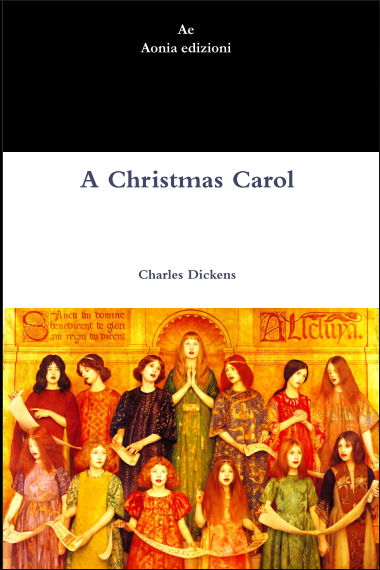A Christmas Carol is a novella by English author Charles Dickens, first published by Chapman & Hall on 19 December 1843. The story tells of sour and stingy Ebenezer Scrooge's ideological, ethical, and emotional transformation after the supernatural visits of Jacob Marley and the Ghosts of Christmas Past, Present, and Yet to Come. The novella met with instant success and critical acclaim.
The book was written and published in early Victorian era Britain when it was experiencing a nostalgic interest in its forgotten Christmas traditions, and at the time when new customs such as the Christmas tree and greeting cards were being introduced. Dickens' sources for the tale appear to be many and varied but are principally the humiliating experiences of his childhood, his sympathy for the poor, and various Christmas stories and fairy tales.
The tale has been viewed by critics as an indictment of 19th-century industrial capitalism. It has been credited with restoring the holiday to one of merriment and festivity in Britain and America after a period of sobriety and sombreness. A Christmas Carol remains popular, has never been out of print, and has been adapted to film, stage, opera, and other media multiple times.
The book was written and published in early Victorian era Britain when it was experiencing a nostalgic interest in its forgotten Christmas traditions, and at the time when new customs such as the Christmas tree and greeting cards were being introduced. Dickens' sources for the tale appear to be many and varied but are principally the humiliating experiences of his childhood, his sympathy for the poor, and various Christmas stories and fairy tales.
The tale has been viewed by critics as an indictment of 19th-century industrial capitalism. It has been credited with restoring the holiday to one of merriment and festivity in Britain and America after a period of sobriety and sombreness. A Christmas Carol remains popular, has never been out of print, and has been adapted to film, stage, opera, and other media multiple times.
| Libro Italia € 6,99 (lo compro qui) E-book Italia € 0,89 (lo compro qui) Amazon Italia € 6,99 (lo compro qui) | Libro USA $ 7,99 (lo compro qui) E-book USA $ 0,99 (lo compro qui) E-book Germania € 0,89 (lo compro qui) |
| Libro Germania € 7,99 (lo compro qui) Libro Regno Unito £ 5,99 (lo compro qui) E-book Regno Unito £ 0,77 (lo compro qui) | Libro Francia € 7,99 (lo compro qui) Libro Austria € 7,99 (lo compro qui) Libro Spagna € 7,99 (lo compro qui) |
Marley was dead: to begin with. There is no doubt whatever about that. The register of his burial was signed by the clergyman, the clerk, the undertaker, and the chief mourner. Scrooge signed it. And Scrooge's name was good upon 'Change, for anything he chose to put his hand to.
Old Marley was as dead as a door-nail.
Mind! I don't mean to say that I know, of my own knowledge, what there is particularly dead about a door-nail. I might have been inclined, myself, to regard a coffin-nail as the deadest piece of ironmongery in the trade. But the wisdom of our ancestors is in the simile; and my unhallowed hands shall not disturb it, or the Country's done for. You will therefore permit me to repeat, emphatically, that Marley was as dead as a door-nail.
Scrooge knew he was dead? Of course he did. How could it be otherwise? Scrooge and he were partners for I don't know how many years. Scrooge was his sole executor, his sole administrator, his sole assign, his sole residuary legatee, his sole friend, and sole mourner. And even Scrooge was not so dreadfully cut up by the sad event, but that he was an excellent man of business on the very day of the funeral, and solemnised it with an undoubted bargain...




